Fertilizers are used every day by farmers and homeowners to develop crops and gardens. Fertilizers assist various crops growing in various soils and weather environments, whether for a little flower and plant garden or a large farm with numerous crops.
Fertilizers that help plants develop and are cost-effective can be made using chemical substances. Fertilizers, both commercial and consumer, are heavily controlled by both state and federal governments to assure their safety.
What is Fertilizer?
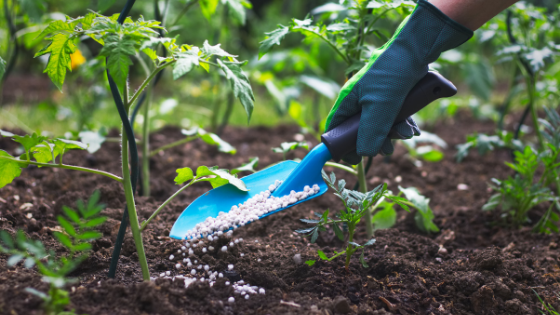
Fertilizers are chemicals applied to crops to boost yield. The key nutrients in fertilizers are nitrogen, potassium, and phosphorus. They enhance the soil’s water retention capacity and increase its fertility.
Fertilizers are food for plants: they provide nutrients to grow and thrive. A mineral plant nutrient is essential or beneficial for the growth and development of plants or the quality of harvested crops.
Plants need 14 vital nutrients, which fertilizers offer, in addition to carbon, hydrogen, and oxygen from the air and water. It is composed of nitrogen (N), phosphorus (P), potassium (K), sulfur (S), magnesium (Mg), calcium (Ca), iron (Fe), manganese (Mn), zinc (Zn), copper (Cu), boron (B), molybdenum (Mo), chlor (Cl), nickel (Ni) (Ni). Sodium (Na) and cobalt (Co) are essential to certain plant species (Co).
Classification of Fertilizers
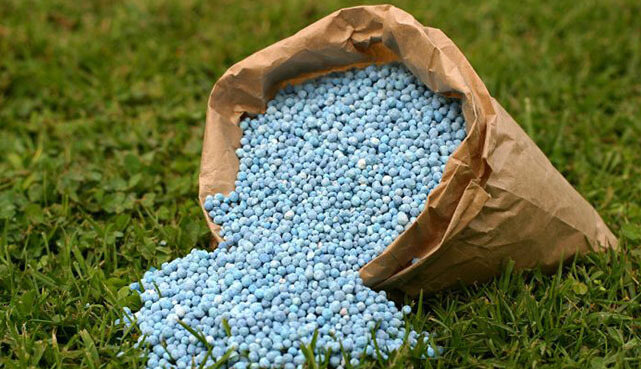
The chemical components nitrogen, phosphorus, and potassium, abbreviated as NPK that are present in the compounds are used to classify the various types of fertilizers. Nitrogenous chemical fertilizers come in a wide variety of forms, including urea, calcium cyanamide, basic calcium nitrate, and ammonium sulfate, to name just a few. These fertilizers most definitely provide nitrogen to the ground they are spread on.
Chemical fertilizers high in phosphorus and potassium, such as superphosphate of lime and triple Super Phosphate, are only two examples of the many different kinds of chemical fertilizers available on the market today. Chemical fertilizers like phosphate and potash provide phosphorus and potassium to the soil. These elements are essential for plant growth.
Nitrogen phosphorus fertilizers, often known as NP fertilizers, are specific chemical fertilizers created by combining nitrogenous and phosphate fertilizers in the appropriate amounts. Calcium superphosphate and dehydrogenated ammoniated phosphate are two examples of the types of fertilizers that fall within the NP category. A single NPK fertilizer will include all three nutrients, nitrogen, phosphorus, and potassium, in certain cases.
Types of Fertilizers
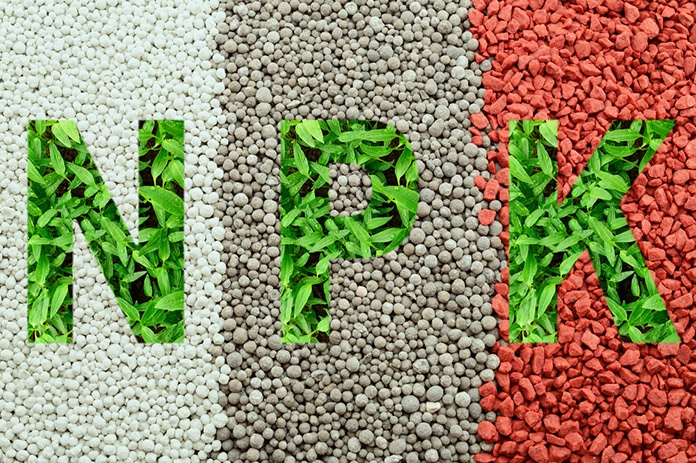
Fertilizers are necessary for the growth of your lawn since they provide nutrients to the ground. It is crucial to fertilize your grass, yet it is often overlooked when caring for your lawn. They can be categorized into two categories based on how quickly fertilizers decompose: slow and fast.
1. Slow-Release Fertilizer
This type of fertilizer has to be applied over a longer period to be effective. In comparison to other fertilizers, its effects also last for a longer period of time. If you don’t mind waiting a bit longer to see results from slow-release fertilizers, you’ll receive better results if you apply them long-term.
Because of the long-term release of this fertilizer, you’ll save both time and money by reducing the number of times you have to apply it to your lawn. Using a slow-release fertilizer is beneficial for the environment since the nutrients it contains are less likely to harm water systems when released slowly. Because it melts slowly, its shape is often granular to release its nutrients gradually.
2. Fast-Release Fertilizer
This fertilizer provides a rapid release of nutrients, making it an excellent choice for people who need to see results quickly. This fertilizer will need to be used frequently due to the brief duration of its effect on the plant’s growth. There is the possibility of pollution of ground and surface water sources due to the fast release of nutrients.
A significant amount of damage has been done to water quality by phosphorus in the environment. Because of its quick release, it has the potential to produce grass burn, resulting in brown patches of grass all over your lawn and garden.
Fast-release fertilizers are available in various forms, the most prevalent of which are liquid and powdered. Because of this, you can see effects almost immediately. However, the severe health and environmental dangers associated with this type of fertilizer are not advised for use.
While this fertilizer is perfect if you’re in a hurry and don’t mind spending a little additional money, it is not recommended if you’re not. Fertilizers can also be classified according to their composition and material type. These are the basic classification types distinguished by their structural properties.
Synthetic Formula Fertilizer
This fertilizer is made up of a combination of natural and synthetic ingredients. It is also more expensive and is believed to be more harmful to the environment than the synthetic technique. A number of the compounds used include urea, Nitrogen, Phosphorus, and potassium, to name a few.
Also Read: What are the Advantages of Synthetic Fertilizers?
Organic Formula Fertilizer
This is a type of fertilizer that is derived from plants and animals. Because organic fertilizers can be made at home, this fertilizer is safer and less harmful to the environment than commercial fertilizers. Among the plants utilized in its manufacturing are alfalfa and seaweed, while among the employed animals are bone meal, blood meal, and animal droppings.
3. Dry Fertilizer
Utilizing dry fertilizer may be done in a variety of different ways. Distribute it throughout the whole garden, either in a single row or all-around individual plants, whatever you like. Before planting, make sure that the whole garden plot has been covered with one pound of dry fertilizer. Once the rows of plants have been planted, side-dress them.
Two to three inches of space should be left between the seed level or plant row and the fertilizer, and one to two inches of space should be left below it. After applying fertilizer to the plant, you may remove any lingering particles from the plant’s leaves by using a watering bucket. Fertilizers should be distributed uniformly and sparingly throughout the root zone to get the best possible outcomes.
4. Water-Soluble Fertilizer
The use of water-soluble fertilizers may be beneficial to the growth of vegetables. These are administered as often as once a week. A sprinkler may make applying fertilizer to plants much more efficient for a gardener.
Using this form of fertilizer on plants grown in containers is very beneficial to their overall health. It is not typical for standard plant maintenance to include foliar feeding and spraying plants with diluted liquid fertilizer. Instead, use it as a supplement or boost for micronutrients such as iron, manganese, or zinc.
Also Read: How to Make Liquid Fertilizer from Dry Fertilizer – A Complete DIY Guide
Advantages and Disadvantages of Fertilizers
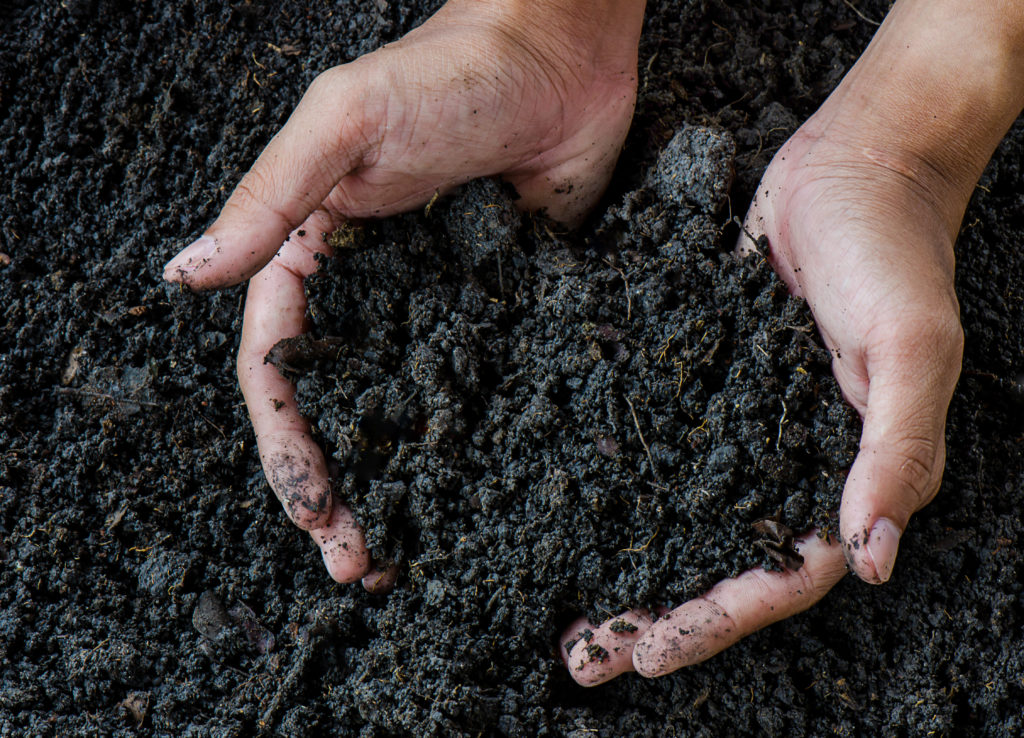
Fertilizers are used commonly by both farmers and home gardeners. Fertilizers come with many advantages, but they also have several drawbacks in addition to those advantages. The pros and cons of utilizing fertilizer are addressed below.
Advantages of Fertilizers
- Full of vitamins and minerals: The application of any of these types of fertilizer provides plants with the vital nutrients necessary for their growth and development. Each kind of fertilizer contributes potassium, nitrogen, and phosphorus in its unique manner; these three elements are necessary for achieving higher levels of agricultural output. Organic fertilizers are better for plants and provide all of the necessary nutrients without harming the environment or humans.
Although organic fertilizers are produced naturally and require more time to prepare, they are superior to chemical fertilizers. As a result, the creation of biofertilizers takes a significant amount of time; nevertheless, the wait is well worth it since these fertilizers enable the soil to heal itself and become more beneficial to plant growth. As a natural result of this, fertilizers are necessary for the healthy development of plants in any form. - Absorption in a short amount of time: There are times when plants need a speedy recovery, and when this occurs, the function that fertilizers play in improving their overall health is significant. Fertilizers provide the nutrients that plants need in an easily absorbed form. Because they are easily soluble and rapidly absorbed by the plant, they contribute to the speedy restoration and enhancement of the plant’s health as soon as they are introduced.
- Available in a Convenient Manner: Fertilizers are in great demand because they promote rapid plant growth and are the most effective way to increase agricultural production. However, to satisfy this demand, many businesses are keeping 24-hour shifts. It is now possible to get inexpensive versions of a broad range of fertilizers.
- Increase the efficiency of the plant’s metabolism: The provision of nutrients to plants in fertilizers is essential to their growth. Only if the metabolic activity is well controlled can it be possible. The use of fertilizers causes an acceleration in the metabolic rate of the plants that receive them.
- Useful for a huge number of productions: High levels of production are required to feed an ever-growing population. Because of the many benefits they provide, including promoting speedy and healthy plant growth, fertilizers play an essential part in agricultural production. Fertilizers are an absolute need if one wants to increase their yield significantly.
Disadvantages of Fertilizers
- It’s a bit pricey: Synthetic fertilizers must be generated in factories, which results in a higher price per unit when compared to manure that is produced naturally. It is pricey since there is a high demand for it due to the reliance on plant nutrients.
- Hazardous: A wide range of fertilizer forms is available, including chemically developed ones. These chemical fertilizers are harmful to both people, and the plants intended to nourish. Itchy skin and chest tightness are two potential side effects of using fertilizers. There is a possibility that the food we eat contains hazardous compounds harmful to us.
- The effects of the surrounding environment: The ecology is harmed in several ways, some of which are direct while others are indirect. Depending on the level of pollution in the soil, water, and air, the growth of plants may either be sped up or slowed down. It may affect ecosystems.
- Reduce the quality of the soil: Fertilizers can reduce the quality of the soil and cause harm to the microorganisms that live in the soil. Long-term use has an unfavorable impact on the pH of the soil and the microbial activity in the ground over an extended period.
- Overuse might harm plants: The quantity of fertilizer that is spread is considered to be moderate. An excessive amount of fertilizer may undoubtedly cause damage to the roots and tissues of plants, which can ultimately lead to the death of the plants. The plant’s requirements will determine the quantity of fertilizer that should be administered. If used excessively, they may be harmful to the plant’s health, particularly if the soil is rich and fertile.
Uses of Fertilizers
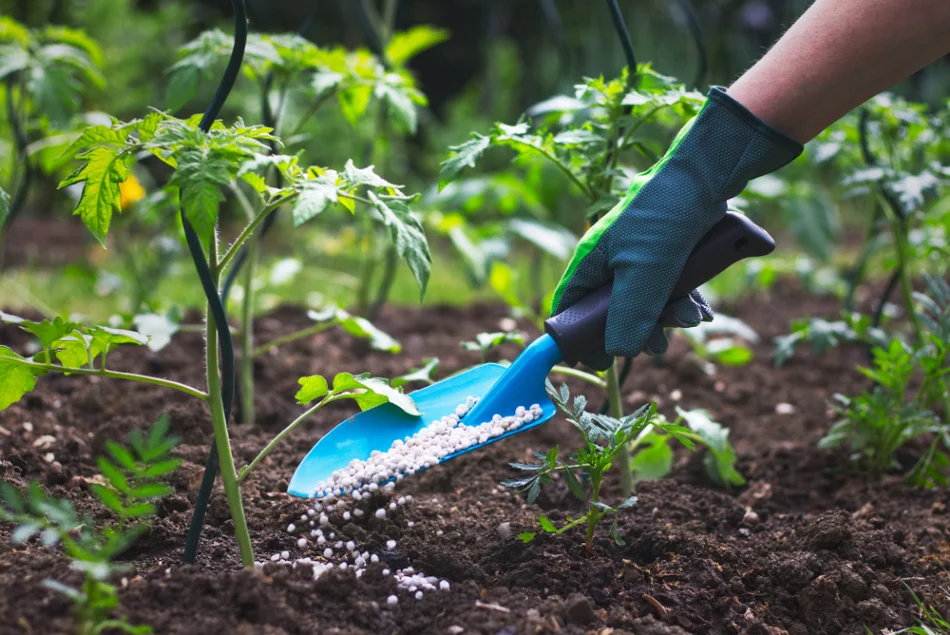
There are many different applications and purposes for the usage of fertilizers. Here are some examples of how the fertilizers would benefit the plants
- Their use as a source of nutrients is beneficial to the growth of plants
- They are being used to boost the overall productivity of agricultural production
- Many people use a high-in nitrogen fertilizer to get a more vibrant green color on their lawns
- Enhance soil quality and texture by applying organic fertilizer
- Gardeners use these substances to provide plants with the essential nutrients they need
- The nutrients that have been depleted are restored in plants that are kept in pots
As the world’s population grows, food resources are becoming more and more limited. To satisfy the ever-increasing demand for food, the government is faced with a significant challenge. Under these circumstances, a fall in agricultural production would be a significant and unwelcome development. This happens due to a loss in the fertility of the soil and a lack of nutrients and pests. The significance of fertilizer in agricultural production is brought to light as a result of this.
Additional Benefits of Fertilizer
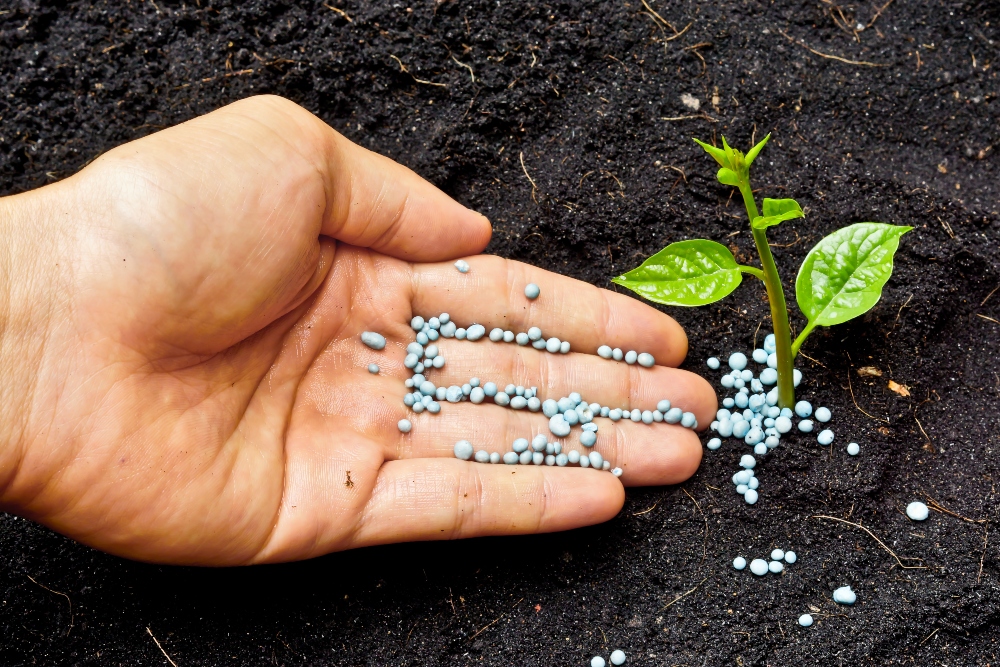
The use of fertilizer strengthens a plant’s immunity to attack many kinds of insects and other organisms, which leads to increased crop production. Pesticides and herbicides have been used less, resulting in healthier harvests.
- A plant’s capacity to store water may be improved by using fertilizer
- These different chemical compounds could have potassium in them. These chemical compounds cause the plant’s stalks and straws to grow more robust due to their interaction
- Phosphorus, one of these chemical components, encourages fast root development and is essential to its achievement
- This chemical makes it possible for plants to speed up producing seeds for their next generation
- The use of fertilizer has the effect of promoting faster plant development
How to Use Fertilizer in the Garden?
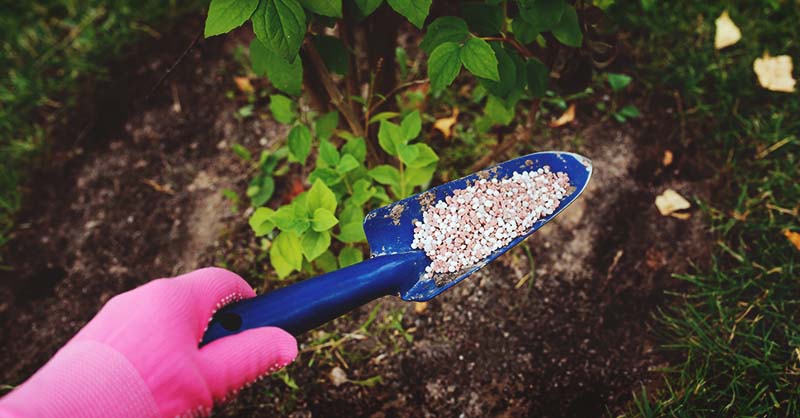
To evenly spread the fertilizer throughout the soil, you may sprinkle it or dig it in. Since most plants absorb nutrients through their root systems, it is common practice to incorporate dry substances, such as compost and dry, granular fertilizers, into the soil around the base of the plant.
As a result of the application of moisture, the particles are broken down, and the plant can take in the nutrients. Nevertheless, several water-soluble fertilizers could be taken up by the leaves. You have several options available to you when administering the fertilizer to your plant, regardless of whether it is granulated, water-soluble, or compost. The following is the recommended procedure for fertilizer application in your garden:
1. Granulated Fertilizer
- Hand-applying granular fertilizer to flower beds and borders, followed by raking it into the ground, is an effective nutrient delivery method
- It is recommended to use a mechanical spreader for spreading fertilizer on lawns and other open spaces
- Rinsing the leaves thoroughly with water can help remove fertilizer granules from the plant’s surface
- To activate the granular fertilizer, water it as soon as applied to the soil
2. Applying Liquid or Water-Soluble Fertilizers
- Large areas may be sprayed using an end-of-hose sprayer if necessary
- You may easily hydrate even the most difficult-to-reach spots with a watering can
3. Applying Compost or Rotted Manure
- It is important to keep the crowns uncovered so they don’t rot
- Since they both degrade with time, you should reapply the coating every few years at the very least
- Put another scoop of the fertilizer into the soil at each stage of the planting process
What are the Best Fertilizers for Your Garden?
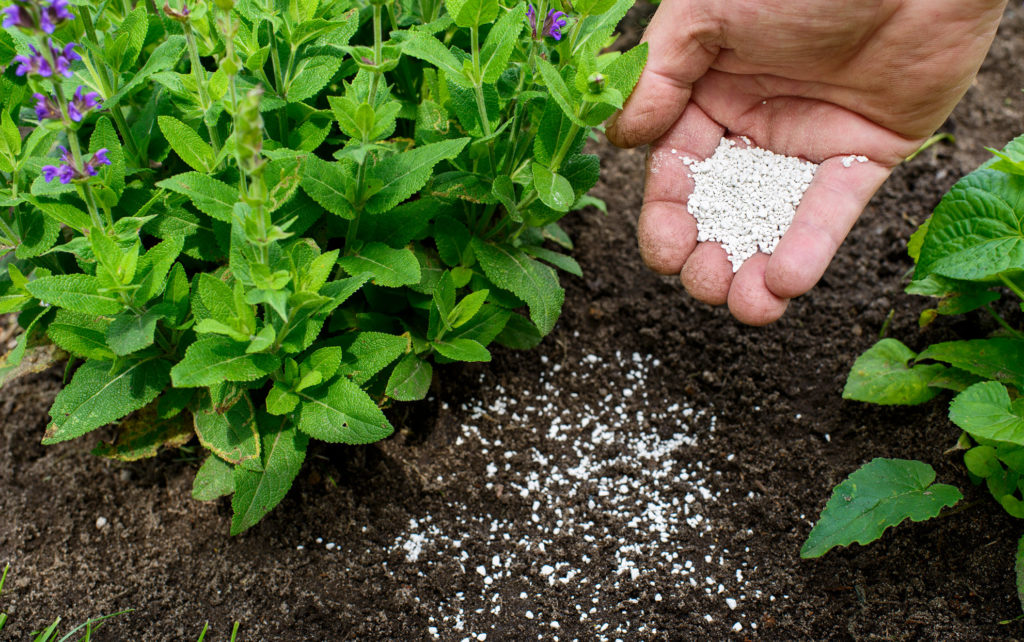
Before applying any fertilizer product, you should first get a sample of the soil analyzed at any laboratory specializing in analysis. The soil sample needs to be obtained when the fertilizer has been well absorbed into the ground. After the results of the tests have been analyzed, it is recommended that compost be applied. The soil test results will be used to decide what kind of fertilizer should be utilized.
The three numerals on the fertilizer bottle each signify a different aspect of the fertilizer’s composition. They are consistently organized in the same fashion. This indicates that a bottle of 10-20-10 fertilizer weighing 100 pounds has 10 pounds of nitrogen, 20 pounds of phosphorus, and 10 pounds of potassium inside it. Depending on the specific situation, the remaining sixty pounds of fertilizer, which might be sand, perlite, or rice hulls, is used as a carrier or filler.
The majority of gardeners agree that phosphorus is more vital to their fertilizers than either nitrogen or potassium. Two examples of this would be 10-20-10 and 12-24-12. These types of fertilizers are often not difficult to get. There are types of soil that already contain sufficient potassium to support the growth of healthy plants and do not need any more potassium to be added. It is highly recommended to use a complete fertilizer since even a little quantity of additional potassium will not damage the plants.
Do not apply fertilizer intended for lawns to garden beds. In addition, many of them include lawn weed control chemicals, which may be detrimental to or even lethal for crops. To increase the pH of soils with a reading of less than 5.7, lime is often applied. The soil is amended with calcium, which reduces the amount of acidity present in the soil, resulting in an increase in pH to more acceptable levels.
Frequently Asked Questions:
Three numbers on fertilizer packets represent nutrients used by plants. The majority of the Nutrient should be comprised of these three types of macronutrients:
• Nitrogen (N)
• Phosphorus (P)
• Potassium (K)
The short-form format of NPK is used where it is applicable
The nitrates fertilizer, often known as “leaf makers,” is the one that stimulates the rapid expansion of leaf tissue. That’s why it’s also referred to as the leaf maker fertilizer. In addition to that, these fertilizers include a significant amount of nitrogen in them.
Fertilizers are a terrific way to ensure that plants remain healthy and flourish, but applying too much of it may have unexpected and perhaps negative impacts. Make sure you know how to use them properly and when. To get the best results possible in your garden, you should combine organic and mineral fertilizers. If you give your plants too much fertilizer, the risk of being attacked by diseases and pests in the garden increases. There is a possibility that fertilizers may harm the plants you have.
• You should choose a water-soluble fertilizer and fertilize your garden plants once every two weeks. Unless it specifically mentions differently on the label of the fertilizer
• Outdoor container plants should be fertilized with a water-soluble fertilizer every two weeks
• Once every week, a water-soluble fertilizer should be used for houseplants to promote healthy growth
Conclusion
How we manage our soil will have a significant impact on the long-term sustainability of our food supply. If we take excellent care of the soil, it will give us healthy food, but it will also make our crops more resistant to drought, pests, and disease.
Fertilizer Related Posts:
- How to Fertilize Lawn? Secret Tips You Should Follow When Fertilizing Lawn
- When to Fertilize Lawn? Important Things You Should Know Before Fertilizing Your Lawn
- 5 Best Fertilizer for Grass in Summer – {Review 2023}
- A Guide to the Best Fertilizer for Cucumbers to Buy in 2022
- Can You Apply Ironite and Fertilizer at the Same Time?
- Top 7 Best Fertilizer for Palm Tree (Review 2022)
- 6 Best Fertilizer Spreader to Buy in 2022 (Top Picks for Your Lawn)
- 6 Best Blackberry Fertilizer to Buy in 2022 (Our Top Picks)
- 7 Best Fertilizer for Plumeria in 2022
- The Pros and Cons of Organic Fertilizer Every Gardener Should Know
- 7 Best Fertilizer for Squash in 2022 [Our Top Picks]
- A Guide to the Best Fertilizer for Fescue Grass in 2023
- The Best Fertilizer for St Augustine Grass in 2022
- When to Fertilize New Grass ? Everything You Should Know
- The Best Oak Tree Fertilizer in 2022 – A Complete Buying Guide
